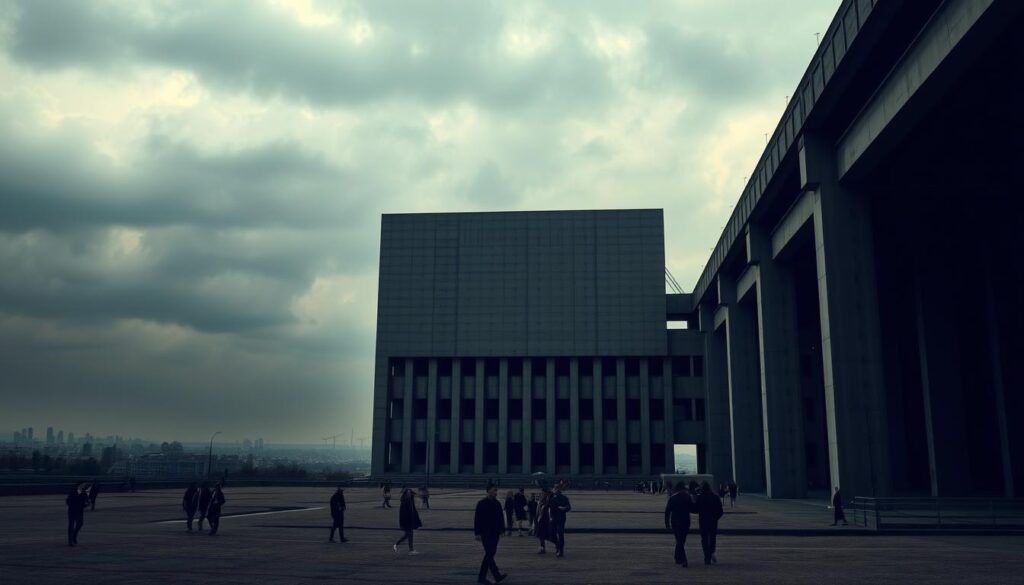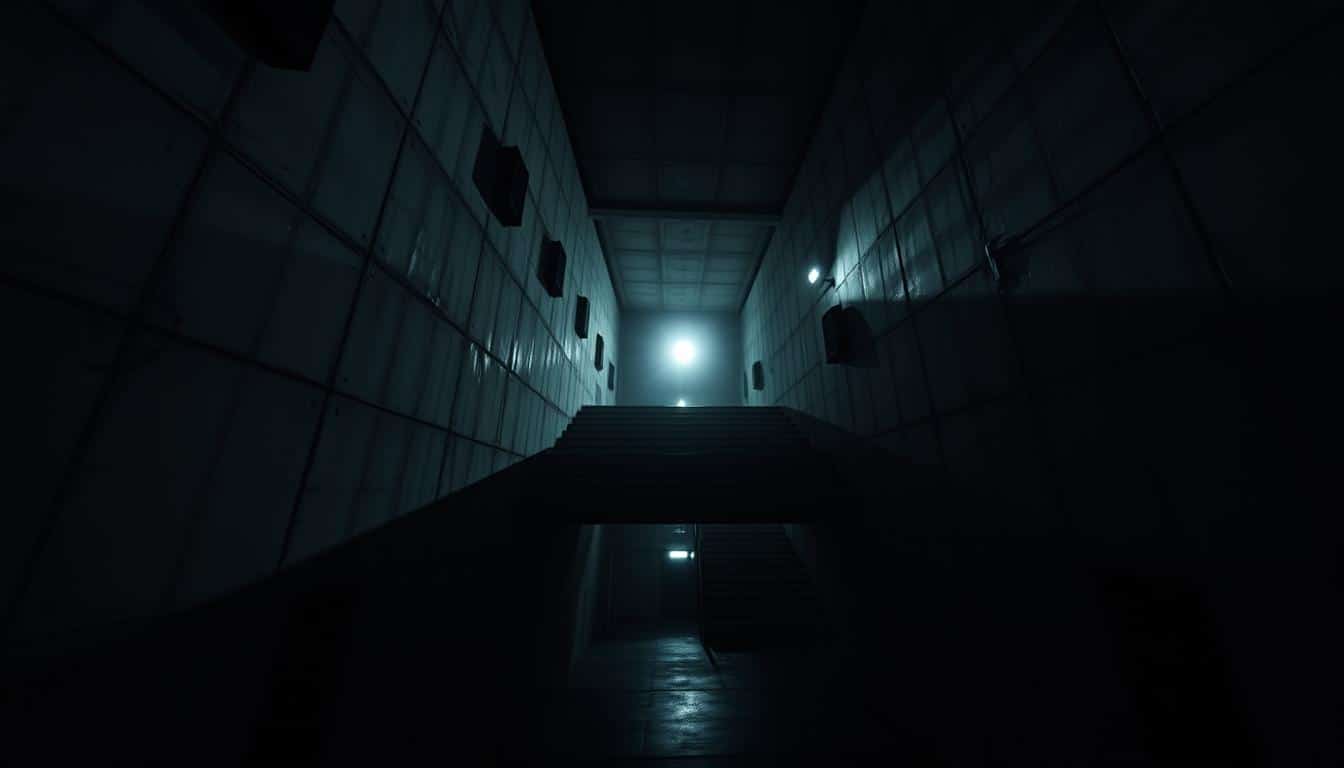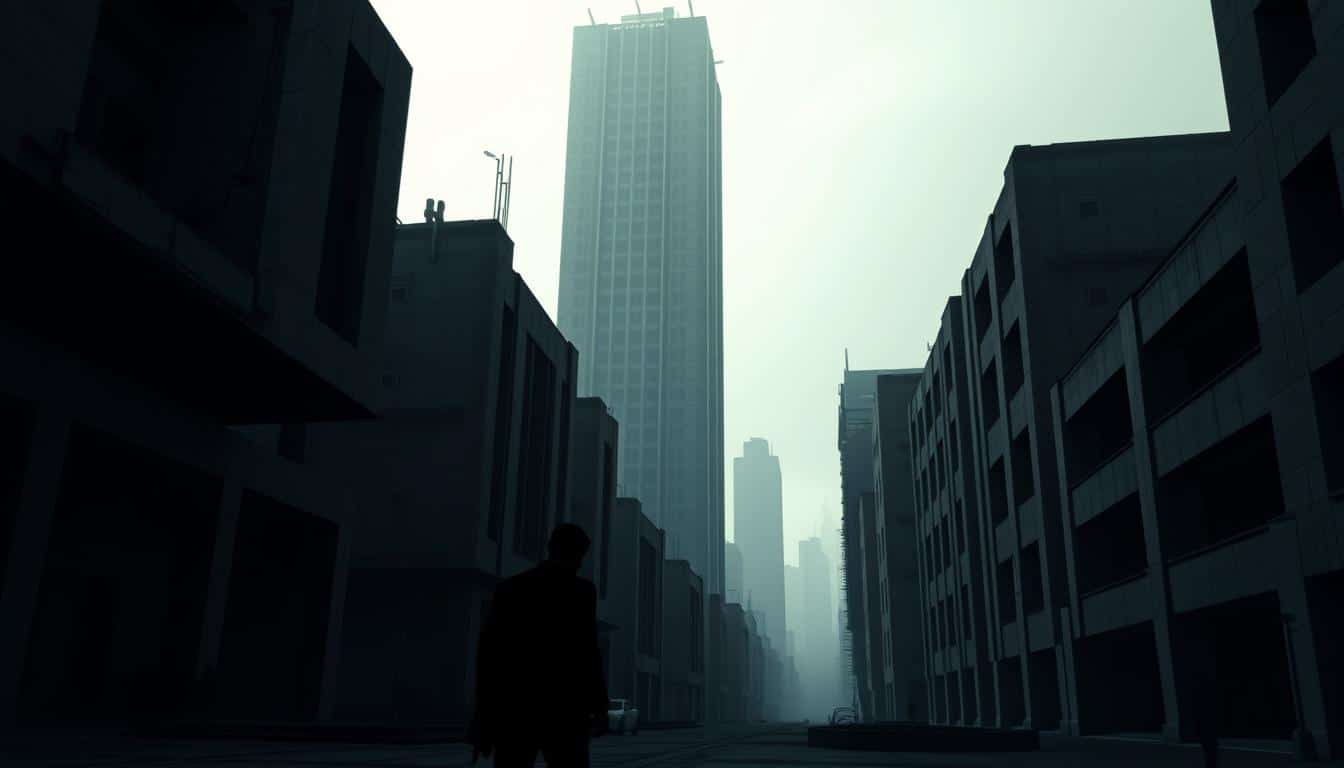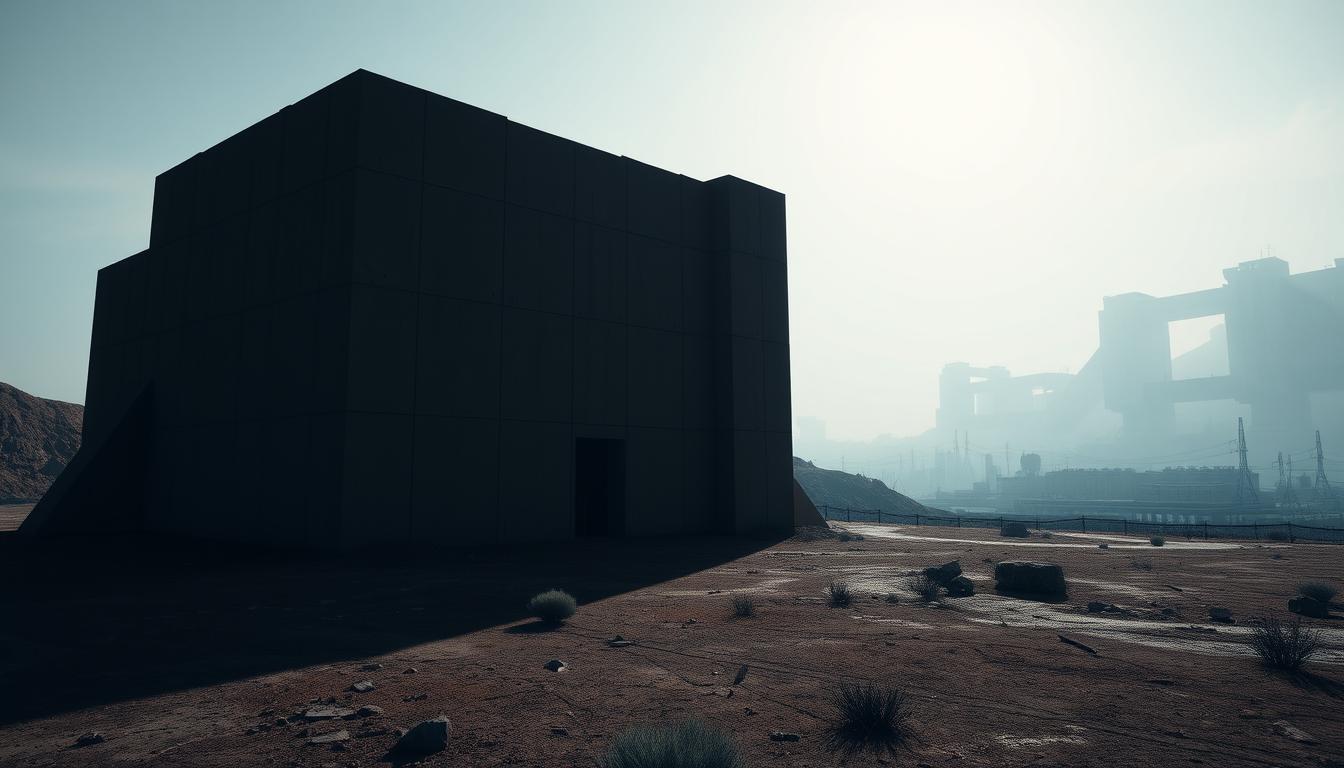We’re going on a trip through brutalism in video games. We’ll see how art, architecture, and gaming come together. Brutalist architecture is raw and big. It started after World War II and changed many design fields.
Video game creators use brutalist architecture’s look to make their games stand out. They add rich textures and cool shapes to their game worlds. This shows how games can reflect and change the past, making new paths for the future of gaming.
Understanding Brutalism: An Architectural Overview
The brutalist movement started in the late 1940s. It came from the urgent needs post-war society had and the wish for a new type of architecture. Known for stark, raw designs, brutalism shows a key time when the building’s use shaped its look. This style focuses on brutalism’s roots. It highlights materials like raw concrete, making buildings strong and sometimes plain.
The Origins of Brutalism
Brutalism’s origins come from the architectural answers to rebuilding cities after World War II. A mix of social-political factors and new architectural thoughts led to a style that valued function over fancy designs. Architects like Le Corbusier led this movement. They set core ideas that aimed to solve the needs of city living in new ways.
Key Characteristics of Brutalist Architecture
Brutalist architecture is known for distinct traits from its history:
- Use of raw, unfinished materials, especially concrete.
- Functional design with little to no decorative elements.
- Bold geometric forms and an emphasis on structural honesty.
- Integration of buildings into their urban environment, often reflecting their utility.
Brutalism’s Socio-Historical Context
Brutalism grew during a time of big social changes, as countries wanted to redefine themselves after the war. This post-war building era aimed to create structures that were functional and showed a new social system. Architects took on the task of changing cityscapes. They made bold design choices that spoke about modern life and community-focused living.

The Influence of Brutalism on Video Game Design
Video games with brutalism craft a special spot, making worlds that pull players in. The look of brutalism – big buildings and raw surfaces – makes game worlds feel real and deep. This style changes how players feel, making them feel alone or amazed.
Creating Atmospheric Environments with Brutalism
Brutalism in games helps make a strong mood. It mixes heavy, big shapes with places that seem strange yet known. Developers use clear visuals to invite players into these worlds, changing how they see things.
These places are more than just settings; they are the heart of the game’s story. Big views and wide inside spaces push players to explore and think deeply.
Brutalism’s Role in Level Design
In level design, brutalism is key. Its firm shapes make games more fun by adding challenges. Spaces and structures guide players, making each move exciting.
This mix of look and use makes game spaces interesting and tough. These choices do more than look good; they make the game world feel real and ask players to dive in.
History of Brutalism Related to Video Games
Brutalism in gaming history tells an interesting story in the development of video game looks. The early game designs of the 1990s started a trend where simple, raw visuals became key. This happened as technology set limits, and early games adopted brutalist themes. They combined simple design with a strong atmosphere.
Early Incorporations of Brutalist Elements in Games
Early 3D games like Quake and GoldenEye began experimenting with brutalism. These games used concrete textures and simple designs. They created spaces that showed the raw power of brutalism. Even with tech limits, these environments felt real and caught the attention of players.
The Shift in Game Design Philosophy
The approach to game design changed as the industry grew. Developers started using many styles, yet brutalism’s basic ideas still influenced them. This change shows a wider appreciation of how structure in games can add to the story and draw in players.
Iconic Games Featuring Brutalist Architecture
Several iconic games show how brutalism has influenced game design. They create worlds that are stark and raw. Their blend of gameplay and aesthetics offers players unique experiences.
NaissanceE: A Case Study in Brutalist Design
In NaissanceE, players explore vast structures that mix isolation with wonder. The game uses simple geometric forms. This challenges how players see things and aligns with brutalist design, evoking deep feelings.
Control: Architecture as Character
Control makes architecture a key part of its story and play. The building, inspired by brutalism, adds to the mood. Players move through spaces that feel strange yet familiar, highlighting isolation and the game’s mechanics.
Dishonored: A Dystopian Vision
Dishonored creates a dystopian world with brutalist design. Its look is defined by bold shapes and big structures, drawing players into a story of moral questions. It shows how brutalism can shape video game worlds.
Emotional and Psychological Impact of Brutalism in Games
Brutalist architecture in video games brings out strong feelings because of its big size and simple look. These designs do more than just provide scenery; they deeply influence how players feel. This makes the game feel more real and gives a strong sense of being there.
The Sense of Scale and Isolation
The huge size of brutalist buildings makes players feel alone. While moving through large areas of concrete and sharp shapes, players might feel very small. This adds to how the game feels, making players get more involved in the world around them.
Creating Atmospheres of Dread and Awe
The strong look of brutalist styles can make players feel scared and amazed at the same time. Players might feel weak compared to the big buildings around them. These feelings make the story stronger, pulling players deeper into the game world. As players explore, the mix of feelings makes the game even more engaging.
Brutalism and the Player Experience
Adding brutalist design to video games boosts the player experience. The simple shapes and little decoration of brutalism push players to explore. This makes players eager to find hidden paths and explore complex areas.
Exploration as a Central Mechanic
Exploring brutalist worlds makes players curious. The raw designs make players actively look around. They want to uncover secrets and solve puzzles, making the game more fun.
Player Interaction with Raw Geometric Forms
Players really get into games with brutalist designs because of the unique shapes. These designs do not just look cool; they also change how players explore the game. This makes players feel more a part of the brutalist world.
Challenges and Criticisms of Brutalism in Video Games
The use of brutalist elements in video games gets mixed reactions. Many people think of brutalism as creating unwelcoming spaces and relate it to tough times in society. When video games use brutalism, developers face the challenge of making it appealing without the negative vibes.
Public Perception and Cultural Reactions
Brutalism divides the gaming world. Its bold, huge buildings impact how gamers feel. While some gamers love its honest, powerful feel, others see it as too gloomy. This makes it hard for everyone to like brutalist games.
The Balance Between Functionality and Aesthetics
Game makers must juggle looks and usability when adding brutalism. They think about how gamers see brutalism and how it affects play. The tough beauty of brutalism can spark creativity. Yet, it’s key to keep the game fun and not just stylish. Great games mix good design with solid gameplay.
Modern Trends in Brutalism within the Gaming Industry
The gaming world is changing. More games now show off a brutalist style. This style is all about simple shapes, rough textures, and strong contrasts. It makes games look bold and real. Both big companies and small teams are starting to use this look. It brings together new ways to play and eye-catching scenes.
Emerging Games Embracing Brutalist Aesthetics
Some new games really show off brutalist design. “Superliminal” and “The Unfinished Swan” are great examples. They use simple design in clever ways. This makes the games more interesting and deep. Players get to explore and think in new ways. These games make you see things differently and pull you into their world.
The Revival of Interest in Brutalism
Brutalist design is getting popular again, not just in games but in art too. People want something real instead of the usual smooth and shiny designs. Brutalism feels new and exciting. It connects with players on a deeper level. This style stands out with its bold looks and deep feelings.
The Future of Brutalism in Video Games
Video games are about to get more exciting as developers explore brutalism further. With new tech, they can create worlds that feel real and raw, using brutalist styles. This means games will have a unique look, featuring simple geometric shapes.
Pushing the Boundaries of Game Design
Brutalism opens up new ways for game makers to design experiences. They can:
- Create immersive worlds with brutalism’s distinct look.
- Use the style’s emotion to tell deeper stories.
- Make game mechanics that have players explore these unique spaces.
This shift towards brutalism may change how we see and play games. Designers trying new things with this style could lead to games that are not only fun but also make us think. This ensures brutalism’s continued impact in gaming’s future.
Conclusion
Video games are changing, and the role of brutalism in game design shows a strong connection between building styles and play. Brutalism’s simple, bold shapes do more than just make games look good. They also help create deep feelings in many games. Games like Control use brutalism to make places you can really get lost in. Dishonored shows how it can change the way we explore in games.
The future of gaming recognizes brutalism’s power to shape the stories and experiences of players. This style makes game worlds that start conversations about space and how it connects to game action. Developers are getting more into using simple shapes and less decoration. This shows brutalism will keep influencing games.
By understanding this impact, we see more into how games are made. It also brings up bigger ideas about how building styles tell stories in games. Looking ahead, brutalism might help make new kinds of games. These games could offer unique and deep experiences for players everywhere.



